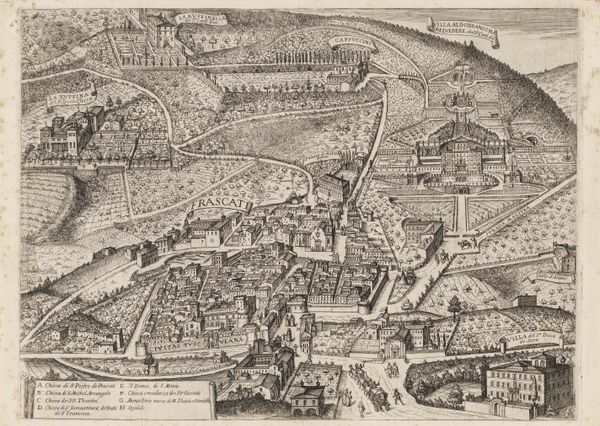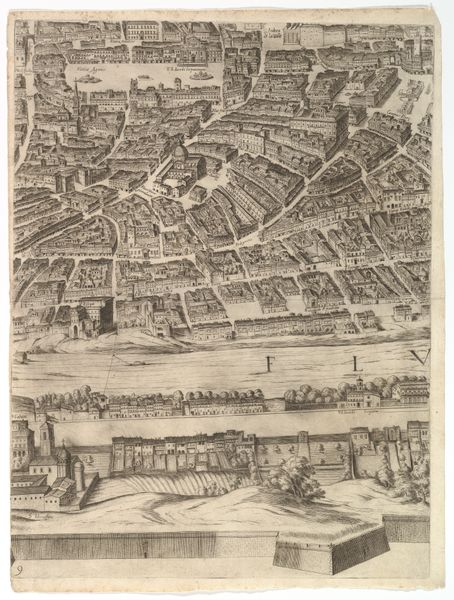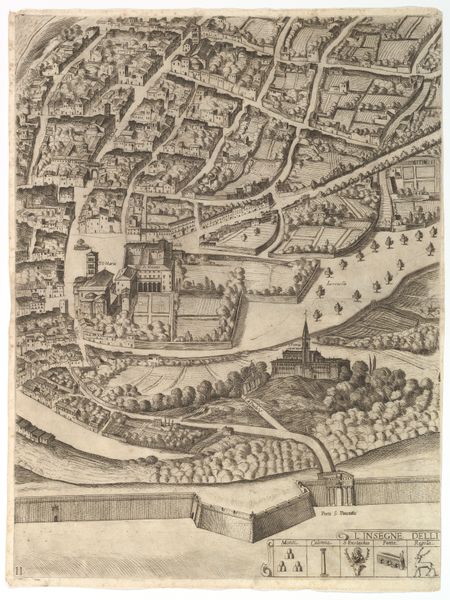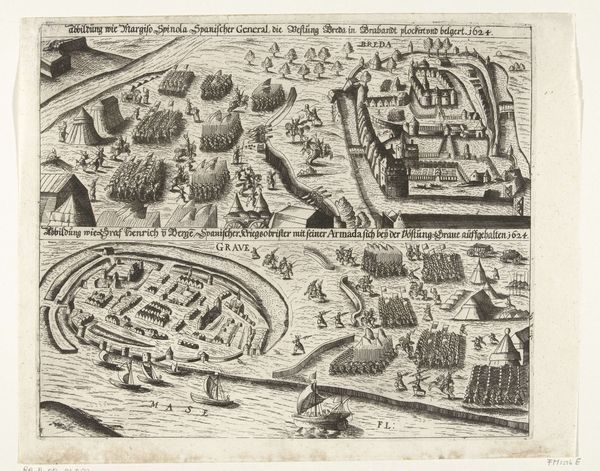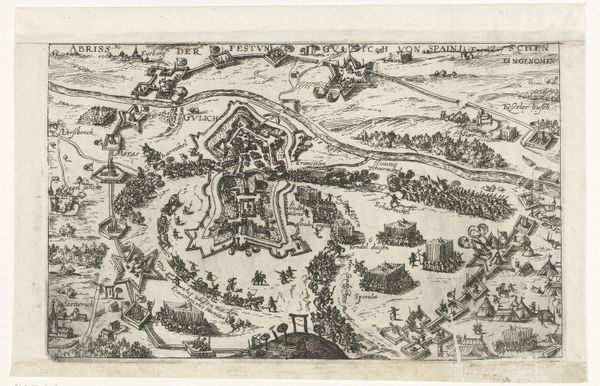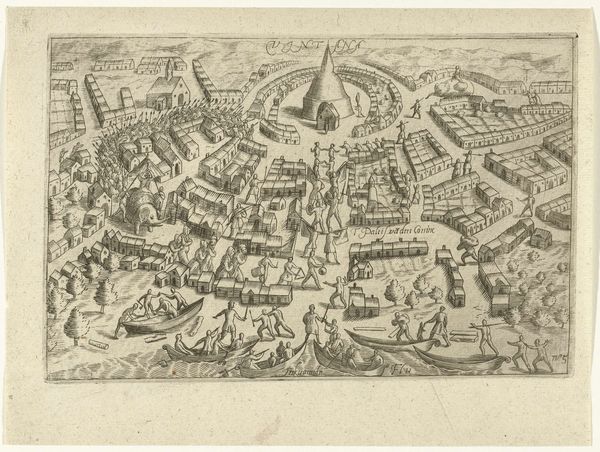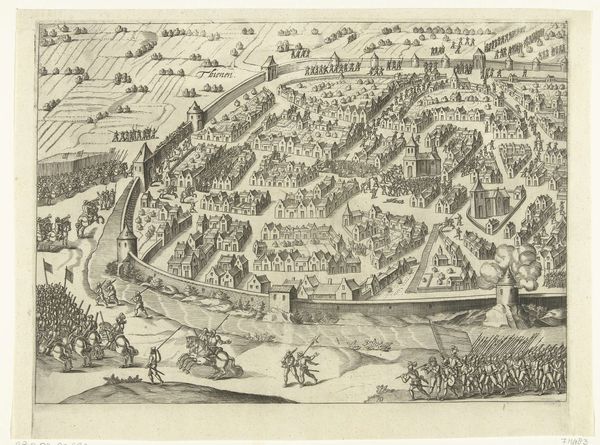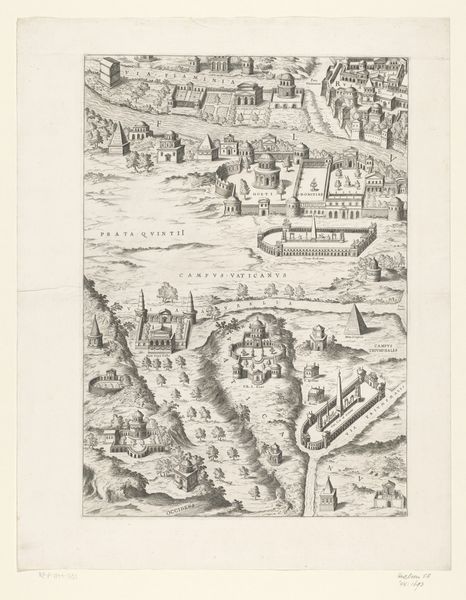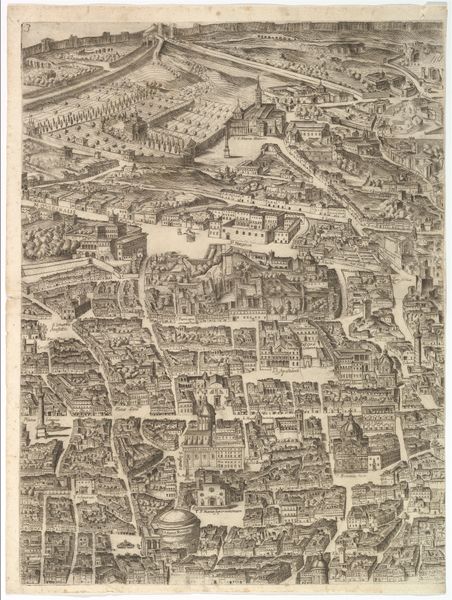
Plan of the City of Rome. Part 4 with the Santa Maria in Aracoeli, the Forum Romanum, the Colosseum and the Lateran Palace. 1645
0:00
0:00
drawing, print, pen
#
drawing
#
ink drawing
#
baroque
#
pen drawing
# print
#
pen
#
cityscape
#
italian-renaissance
Dimensions: Sheet: 21 7/8 x 16 3/8 in. (55.5 x 41.6 cm) Plate: 21 3/8 x 16 1/16 in. (54.3 x 40.8 cm) [partly within the plate margins due to cropping]
Copyright: Public Domain
Editor: This is Antonio Tempesta's "Plan of the City of Rome," from 1645. It's an ink and pen drawing, part of a larger print, depicting the cityscape. It’s incredible to see this detailed rendering; the sheer amount of work is really striking. What catches your eye when you look at this piece? Curator: What’s most compelling is the materiality of the print itself. We have to consider the labor involved, not just in the initial drawing, but in the reproduction and dissemination of this image. Prints like this democratized knowledge. This wasn't some unique, precious painting accessible only to the elite. Editor: So, the medium itself changes its social impact? Curator: Precisely. The printing process – the etching, the paper, the ink – allowed for mass production. Think about it: suddenly, a wider audience could 'own' Rome, even if only in representation. It alters our perception of art's accessibility. We have to remember this was also a time of massive urbanization and construction in Rome, with patronage pouring in to revive the city and Catholicism itself. Tempesta and his studio weren't just crafting art. They were documenting—and maybe even shaping—the city's narrative. What kind of story do you imagine people told because of pieces like this? Editor: I guess I never thought about a drawing like this being potentially revolutionary through its accessibility! It makes me reconsider my definition of 'art' itself; maybe a detailed street map isn't just for practical purposes. Curator: Exactly. By examining the production and reception of objects like this, we blur the lines between art, craft, and document. And isn’t that where the real richness lies? Editor: Absolutely. Considering the social and material context really shifts the perspective. Thanks for opening my eyes to this Curator!
Comments
No comments
Be the first to comment and join the conversation on the ultimate creative platform.

